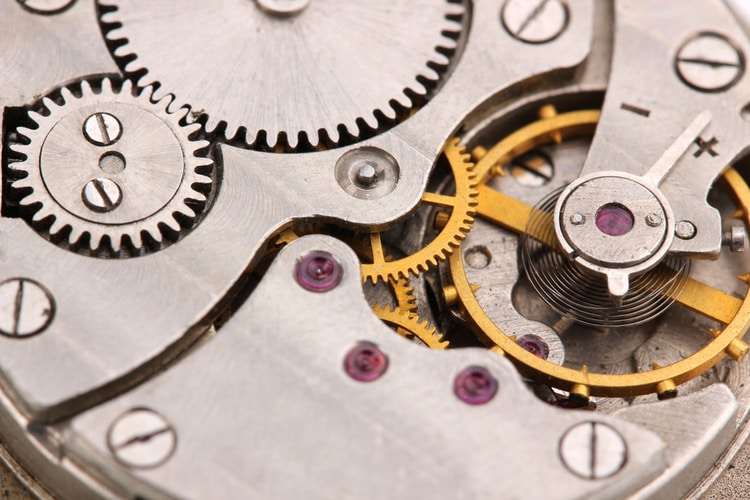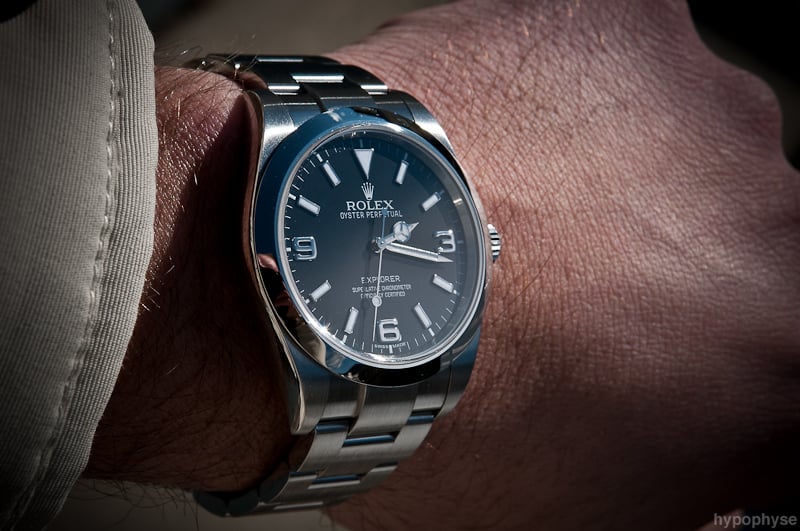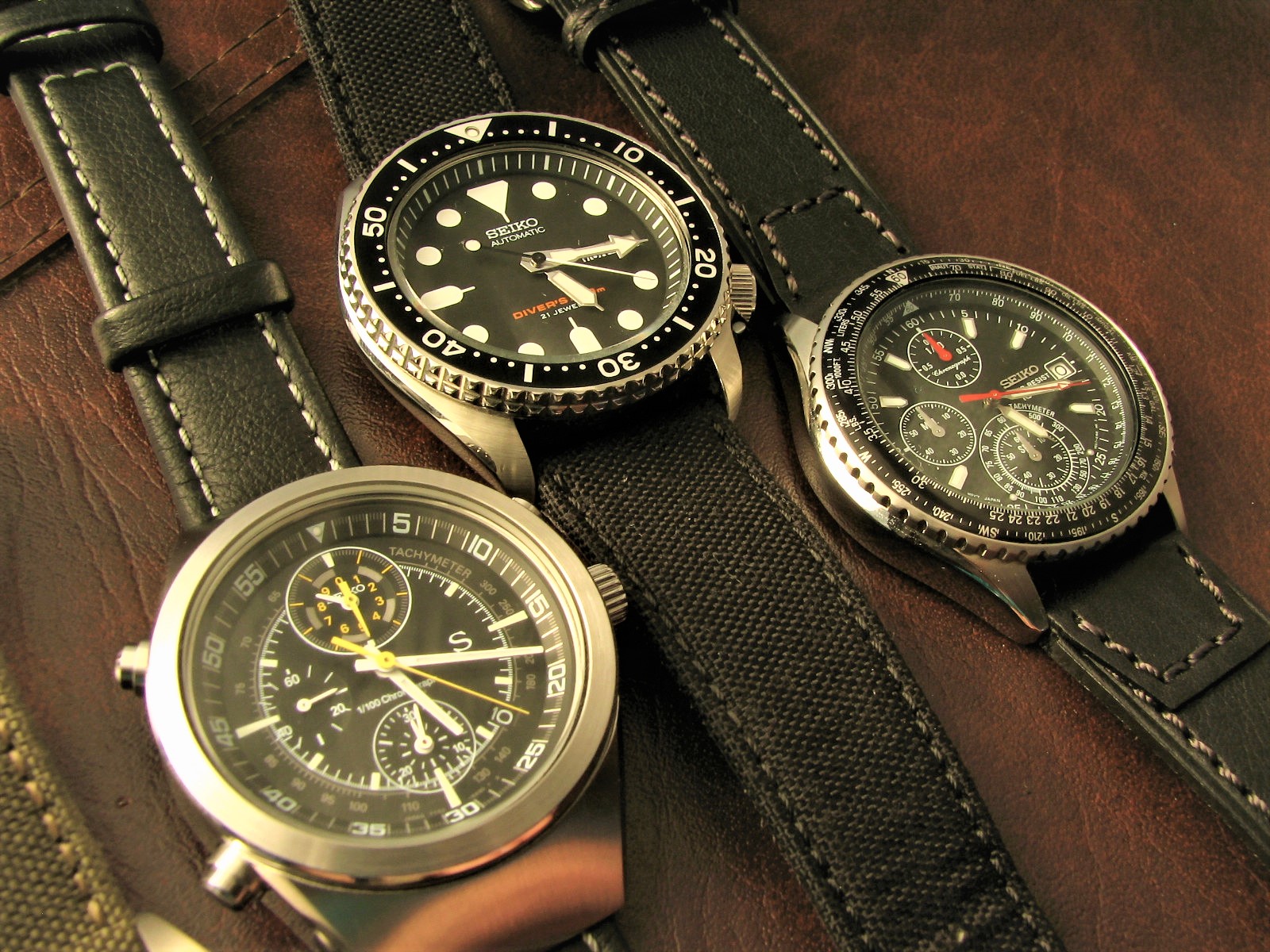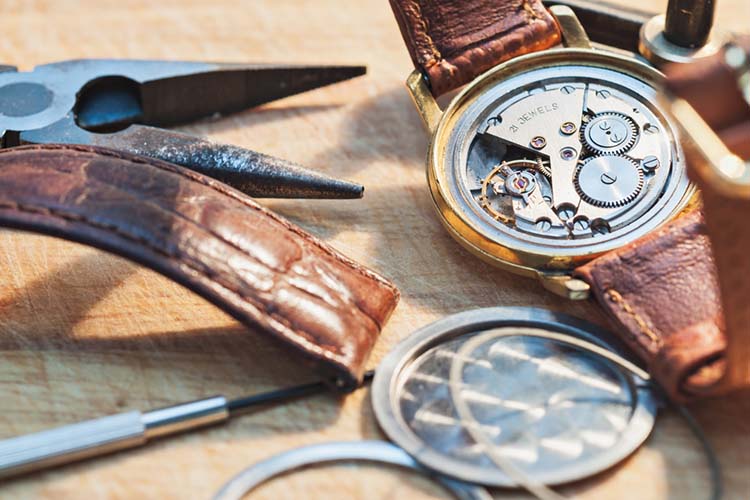Watches are intriguing devices and have always been objects of fascination due to their extreme portability but highly sophisticated but tiny mechanical parts. What is even more interesting is the fact that all this sophistication is fitted into such a tiny enclosure. You may have noticed that it is written on some watches that they contain jewels. Ever wondered what this means? Why do watches have jewels?
Watchmakers use jewels or precious stones inside of mechanical watches to reduce friction between the surfaces of moving metal parts. The wheel train bearings and the escapement in a watch can get worn quickly, especially without lubrication, so the jewels help keep them running smoothly and accurately.
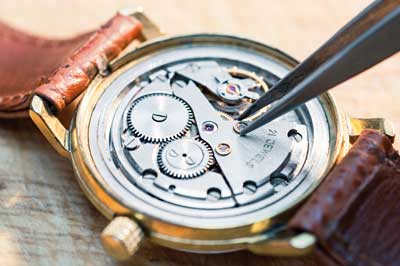
Also, it’s worth noting that while the watch community generally talks refers to jewels when talking about mechanical watches, but as we’ve explained in a separate guide – many quartz watches also use jewels.
Let’s take a closer look at the jewels contained within a watch and discuss whether some are better than others.
Table of Contents
Why Watches Have Jewels
Close up view of an automatic watch with jewels
The matter is actually simpler than you think. Stones or jewels are used in watches to prevent or reduce friction between the surfaces of moving metal parts within a watch.
When metal rubs against metal in the absence of lubrication, the moving parts like pivots and bearings in a watch can get worn quickly, which can lead to the watch breaking down. Although in the early days of watchmaking genuine semi-precious stones like rubies emeralds and sapphires were used, today some synthetic stones have been developed for this purpose.
Where Are Jewels Used Inside Watches?
Usually, most watches contain jewels in their pivot points and in the gear train. You can also see jewels in the anti-shock mechanism.
Since jewels are expensive, unscrupulous manufacturers sometimes add jewels to watches in places where they are not required and unnecessarily raising the price of the watch.
This would lead to the misconception that the watch is sophisticated and expensive although it is just a simple and inexpensive watch with its price inflated due to the additional jewels. In fact, these extra jewels can actually work to the detriment of the moving parts.
That said, the difference in the number of jewels from one watch to another depends on the level of complication in the moving parts. Additional jewels can especially be noticed in Automatic watches.
So, the answer to the question of why do watches have jewels is simply to reduce the wear and tear of moving parts to give a longer life to the watch and to create longer periods between servicing.
Jewels Are Used For Accuracy
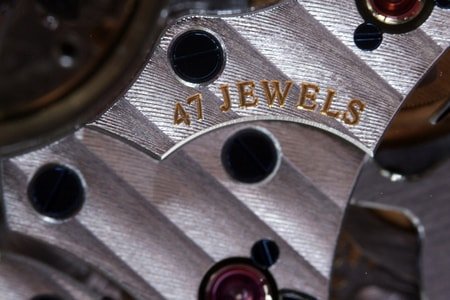
Another point that is worth noting is that of the accuracy of watches. We all like to have an accurate watch. Some of the most precise Swiss-made watches can have tremendous accuracy and you don’t need to correct them for months or even years. One of the contributing factors to the accuracy of a watch is the number and quality of jewels used in it.
The explanation for this is quite simple. The biggest constraint in the functioning of a watch is friction. If more friction builds up between the moving parts of a watch, then an extremely minute slowing down takes place. Although this dragging is almost imperceptible, over a period of time, it builds up into a few seconds or even minutes of difference.
Friction between moving parts can be greatly reduced by adding jeweled bearings to critical parts, thereby increasing the accuracy of the timepiece.
This brings us to the second question – are sapphires Rubies emeralds better? Let’s consider this interesting question and see if we can find a simple answer to it.
Are the Jewels in a Watch Valuable?
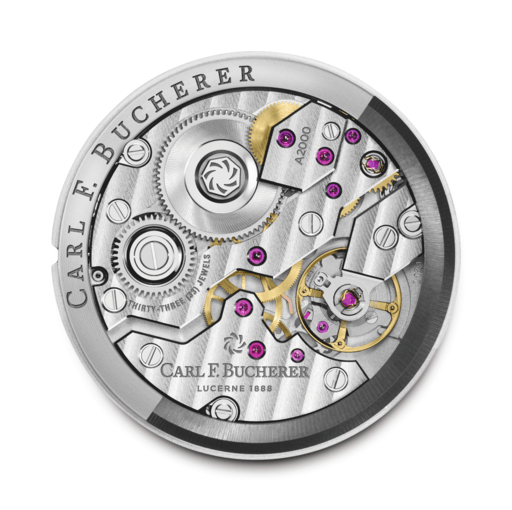
Traditionally, mechanical watches often used natural gems to support the watch components in reducing and preventing friction. Over time, the friction caused without the jewels could offset the time by a few seconds or minutes, affecting precision timekeeping. In light of this, the concept of jewel bearing was first introduced in 1704. At that time, watchmakers often used natural gems like diamond, sapphire, and ruby. In doing so, the cost of the watch also increased.
Sourcing and processing of gems to fit into tiny watch components is no easy feat. Moreover, natural ruby, the most preferred gem, has impurities making them difficult to process as jewel bearing. Combined with the fact that these gems are quite rare to get hands-on, paved the way for the creation of synthetic gems as a perfect substitute for natural gems in watches. Now, all modern watches and watch brands predominantly use synthetic gems to increase the efficiency of the watches without increase their cost.
The synthetic jewels in themselves are not as valuable as the gems in your jewelry or accessories. These synthetic gems, developed in a controlled environment, work as efficiently as natural gems without adding extra cost or value. But, despite being “man-made”, these synthetic gems have the same properties and chemical components as natural gems. Most commonly, brands now use synthetic ruby, given their hardness and resistance. Some watches also use synthetic sapphire or diamond as well.
How Many Jewels Are in a Good Watch?
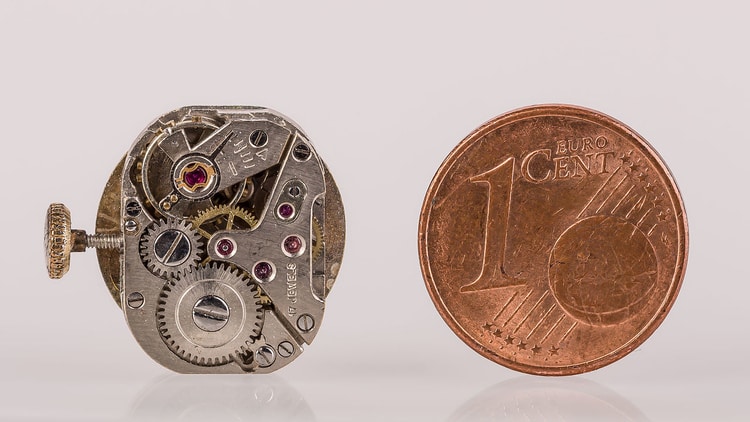
Typically, most mechanical watches come with a 17 jewel configuration. With the advent of new technologies, automatic self-winding watches host either 21 or 25 jewels in them. Automatic movements have more components and moving parts compared to traditional mechanical movements, warranting the use of more jewels. Besides, automatic watches are generally more prone to wear and tear. So keeping this in mind, watch manufacturers use more jewels in an automatic watch over a mechanical watch.
For instance, the Bulova 21-jewel watch with sapphire bearings, developed in the 60s, stands the true test of time. Without needing any service or repair, this timepiece functions precisely and accurately even today. These jewels come with a natural ability for lubricant retention, making it possible to retain the accuracy of time for many years without service.
On the other hand, we have brands like the Rolex and Vacheron Constantin, using a mechanical movement and equipped with complications like a perpetual calendar, chronograph, or/and tourbillon functions. These functions require a higher number of jewel bearing to ensure the smooth functioning of the added components without further friction build-up. To this extent, the most complicated watch ever made by Vacheron Constantin with 57 complications comes equipped with over 200 jewels.
While there is no definite answer to how many jewels make a watch perfect or good, it largely depends on the movement type and the number of complications in them.
What Does “17 jewels” Actually Mean?
Watches that come with 17 jewels hold the name “fully jeweled watch“. This is because mechanical watches use 17 jewels to compliment all the components consisting of the balance wheel, central wheel, staff pivot, pivot bearing, escape lever, escape lever pallet, fourth wheel, third wheel, and escape wheel.
Whereas, watches with automatic movement or watches with many complications tend to use a higher number of jewels. Watch brands add more jewels based on the requirement of the watch functions. However, from the inception of jewel bearings as watch components, mechanical watches have used 17 jewels, setting the bar for a “fully jeweled watch” on performance and accuracy.
Do More Jewels Make it a Better Quality Watch?

In short – no, more jewels do not necessarily mean better watch quality.
A simple mechanical watch comes with 17 jewels. A higher number of complications or an automatic movement in a watch requires more jewels. You may have seen some brands focusing on the jewel number to increase the cost or value of the watch. To this extent, some brands market a higher number of jewels merely to increase the cost of the watch.
However, it is wise to remember that more jewels do not make the watch function any better than the actual number of jewels required. Though, some mechanical watches may use 21-27 jewels to reduce any positional errors within the watch. Similarly, watches with an automatic movement have multiple moving parts, requiring a higher number of jewels.
Sometimes, more jewels than actually required can lead to a detrimental effect over the long term as well. If you are looking for a watch with not many complications but with more jewels than required, please be aware that brands do this to boost the price without in fact actually having the value as they deem it to be.
What Kind of Jewels Are Used in Watchmaking?
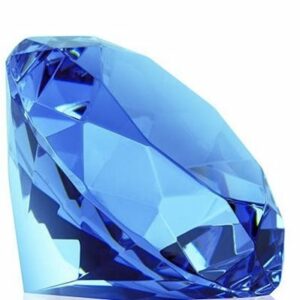
Precious stones like diamond, sapphire, ruby, and garnet were used in the moving parts of watches ever since the invention of jewel bearings in 1704.
Sapphires crystals are also used in watch faces because their hardness makes them one of the most scratch-resistant types of watch glass material available.
Over the years, synthetic sapphire was developed and today, synthetic Sapphire synthetic or genuine Rubies are used. Emeralds are only used for decorating watches, for instance, the Piccadilly Princess Royal Emerald Green watch which is priced at about a million dollars.
Are Sapphires, Rubies or Emeralds Better?
We cannot really say whether a sapphire or ruby is better for creating a jewel bearing in a watch. Whether sapphires or rubies are used the smoothness of movement solely depends on the level of sophistication and design of the internal parts of a particular watch.
Generally speaking, ruby is the most preferred stone used in a watch, as can be seen in most of the watches that are available in the market today. So, the question of rubies, emeralds, or sapphires being the better choice for watches really boils down to the purpose for which they are to be used.
Sapphire may be better in place of ruby for a particular watch design. However, it would be incorrect to say that any particular jewel is better than the other out of these three. We hope that these two questions have been answered adequately and that you have enjoyed reading this article. Speaking of jewels, several readers have asked: are watches considered jewelry? – find out here.

